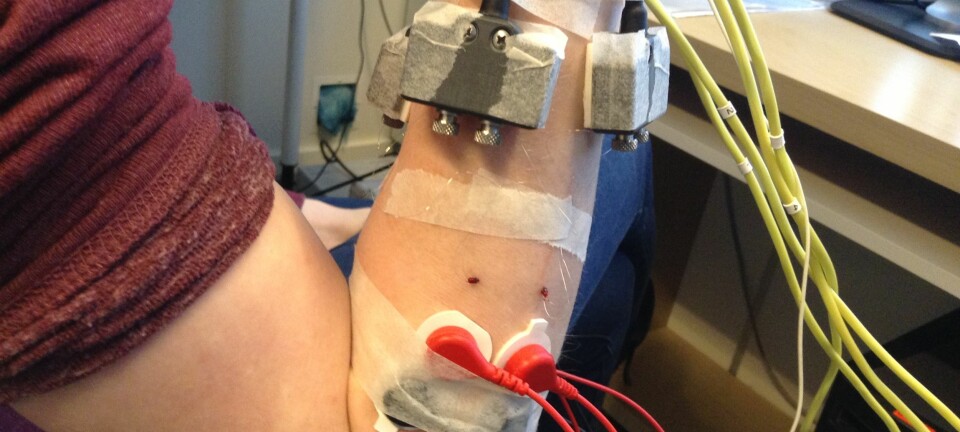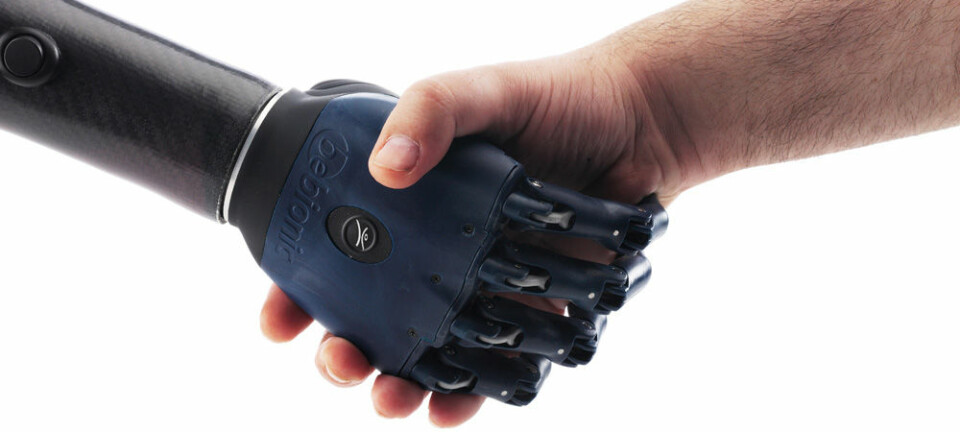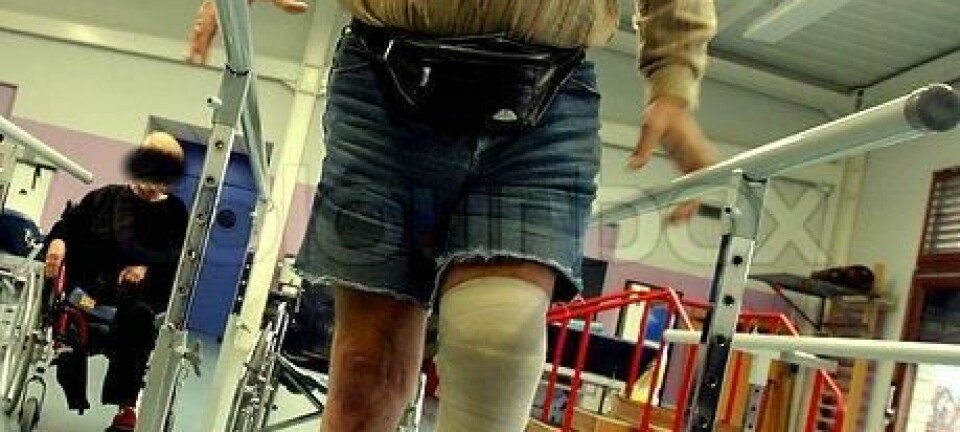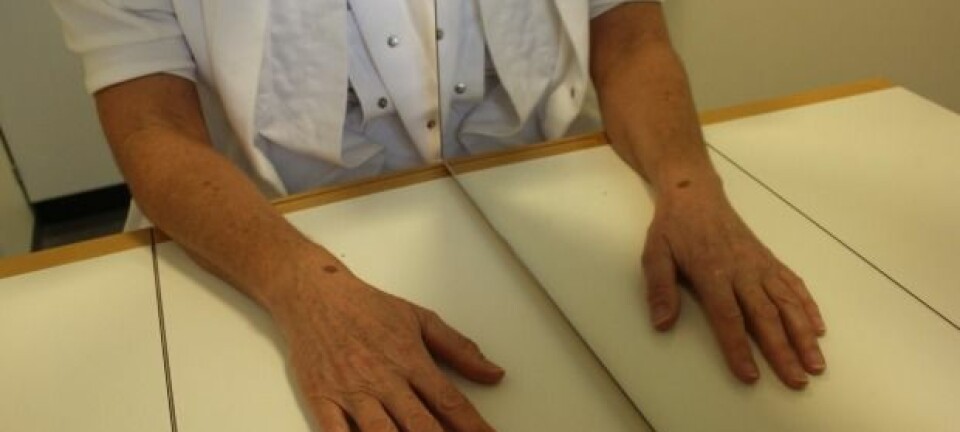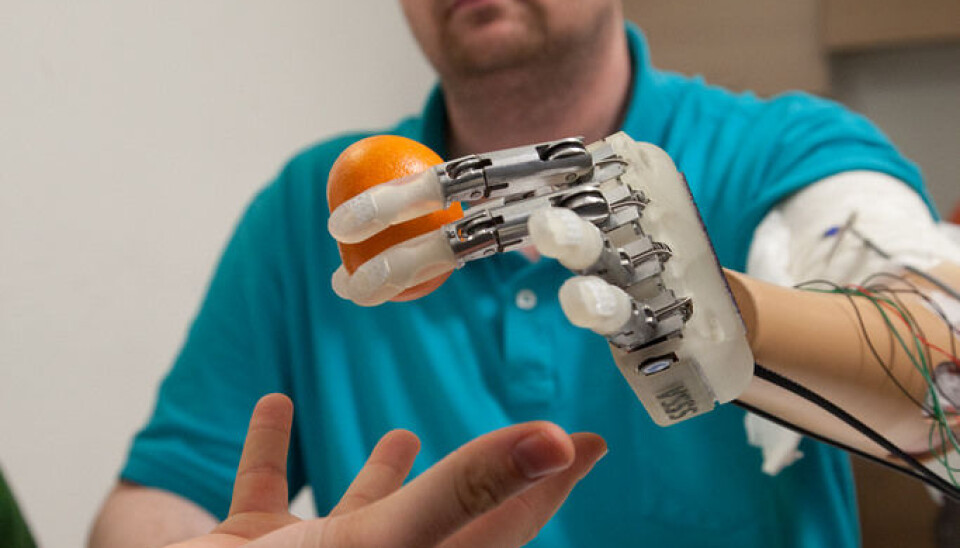
A ‘feeling’ prosthesis was only the starting shot
Earlier this year, a Danish amputee became the first ever person to feel through his prosthetic limb. The main findings of the project are underway, and the project has just been granted an additional €6 million for further research.
It made the Danish headlines when Dennis Aabo Sørensen in February became the first ever person to feel through a hand prosthesis. One of the functions he learned to control was how hard to squeeze in order to hold various objects.
The ’feeling’ prosthesis was a sensation in itself, but this was actually only a small part of a much larger international project, TIME, coordinated by the Department of Health Science and Technology at Aalborg University, Denmark.
One of the objectives of the TIME project, which ran from 2008 to 2013, was to look at whether sensory feedback from implantable electrodes in the prosthesis can help the 70 percent of amputees who experience phantom pains.
Follow-up project
Now the scientists can continue their research, as TIME is being followed up by another EU-funded project, EPIONE. This time, the project is funded by a €6 million grant and, as with the TIME project, it is coordinated by Associate Professor Winnie Jensen of Aalborg University.
We will be testing three different models: electrical stimulation on the skin surface, mechanical stimulation through pressure sensors in a hand prosthesis, plus the same model we used in the TIME project – electrical stimulation of the nerves.
”We are scaling up the TIME project to cover more patients. We have gone from using one hospital to using three and are hoping to operate 8-12 patients, 2-4 of whom in Denmark. We have also expanded our objectives by asking ourselves questions about which types of sensory feedback are the best,”
“We will be testing three different models: electrical stimulation on the skin surface, mechanical stimulation through pressure sensors in a hand prosthesis, plus the same model we used in the TIME project – electrical stimulation of the nerves.”
Slow process
The fact that the TIME research group has been granted a further €6 million suggests that Dennis Aabo Sørensen also experienced relief from his phantom limb pains. However, despite numerous requests, Jensen is reluctant to be specific about where the project is heading:
”We are currently working on getting our findings published, and it will probably take 3-4 months before we can say anything,” she says.
Of the approximately 70 percent of amputees who experience phantom limb pains, the pains become chronic for some 30-40 percent. This means that an effective treatment of the pain would make life easier for a great number of people around the world.
However, as with all other scientific studies, this project is a slow process. Jensen explains that, ideally, once the EPIONE projected is completed in 2017, they will have come up with a technology that is so well tested and safe that a commercial manufacturer will want to develop it further.
New concept not limited to phantom pains
“The concept with electrical stimulation of the nerves extends beyond phantom limb pains and will also be relevant to paralysed patients, and as in Dennis Aabo Sørensen’s case, to create ‘feeling’ prostheses – perhaps even some that can be controlled through the brain. But first we need to demonstrate that it’s safe to have electrodes implanted in the body over extended periods, along with figuring out which one of the three types of stimulation we will be testing can relieve phantom limb pains,” she says.
“Not much is known about how phantom pains occur, but scientists do know that we have a kind of mental map of the body, which helps the brain to navigate.
Previous studies have shown that when, for instance, you lose a hand it causes an imbalance between the map in the brain and the body and the signals that flow back and forth. Our idea was to try to manipulate this map by sending electric signals into the neural pathways.”
---------------
Read the Danish version of this article at videnskab.dk
